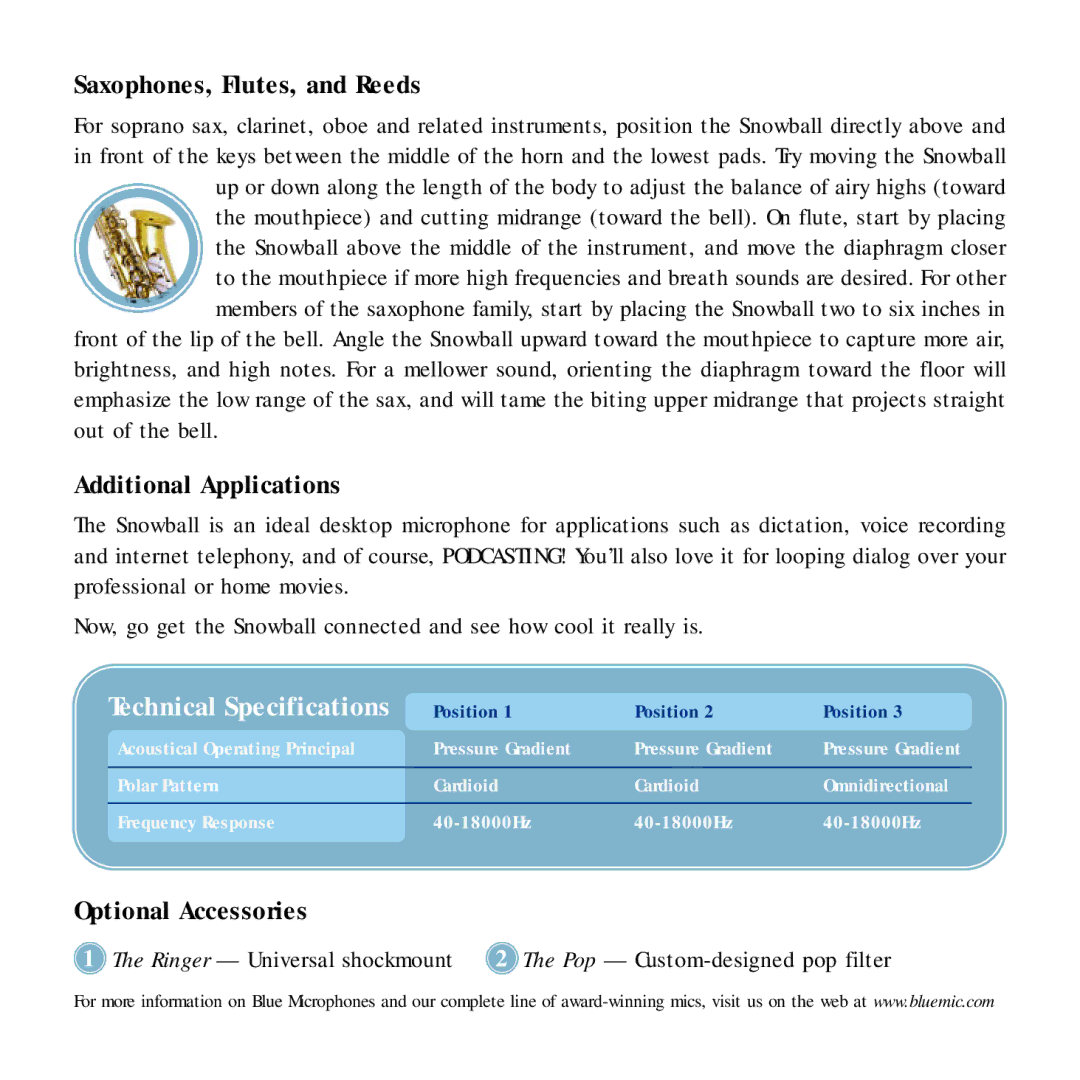
Saxophones, Flutes, and Reeds
For soprano sax, clarinet, oboe and related instruments, position the Snowball directly above and in front of the keys between the middle of the horn and the lowest pads. Try moving the Snowball up or down along the length of the body to adjust the balance of airy highs (toward the mouthpiece) and cutting midrange (toward the bell). On flute, start by placing the Snowball above the middle of the instrument, and move the diaphragm closer to the mouthpiece if more high frequencies and breath sounds are desired. For other members of the saxophone family, start by placing the Snowball two to six inches in
front of the lip of the bell. Angle the Snowball upward toward the mouthpiece to capture more air, brightness, and high notes. For a mellower sound, orienting the diaphragm toward the floor will emphasize the low range of the sax, and will tame the biting upper midrange that projects straight out of the bell.
Additional Applications
The Snowball is an ideal desktop microphone for applications such as dictation, voice recording and internet telephony, and of course, PODCASTING! You’ll also love it for looping dialog over your professional or home movies.
Now, go get the Snowball connected and see how cool it really is.
Technical Specifications | Position 1 | Position 2 | Position 3 | ||
| Acoustical Operating Principal | Pressure Gradient | Pressure Gradient | Pressure Gradient | |
|
|
|
|
| |
| Polar Pattern | Cardioid | Cardioid | Omnidirectional | |
|
|
|
|
| |
| Frequency Response | ||||
Optional Accessories |
|
|
|
| |
1 The Ringer — Universal shockmount | 2 The Pop — | ||||
For more information on Blue Microphones and our complete line of
